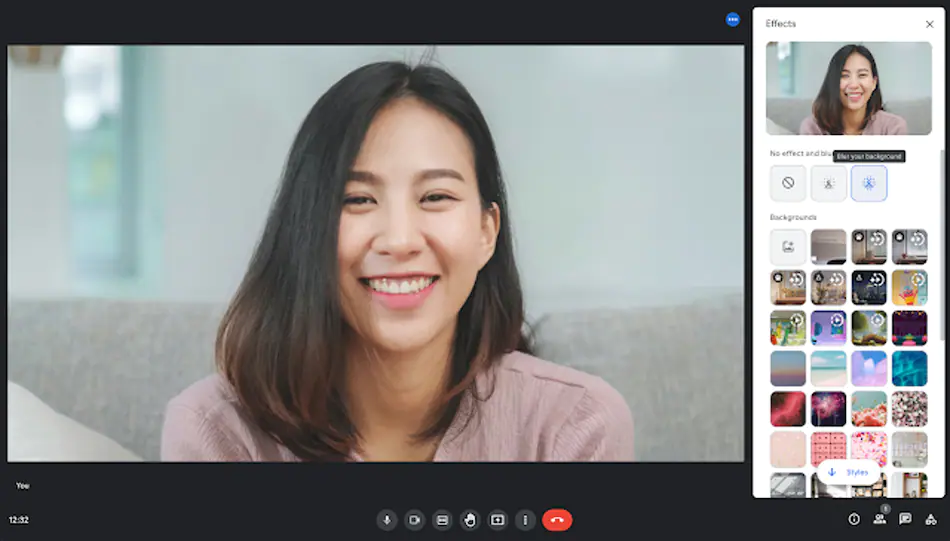 If you want to achieve maximum mobile optimization of your website, make sure you adhere to these 14 practices. Do you want to know what they are?
If you want to achieve maximum mobile optimization of your website, make sure you adhere to these 14 practices. Do you want to know what they are?
Google already started using its “ mobile-first ” index a while ago. Prior to implementation, SEO professionals had to work hard to ensure that their website complied with Google’s “Core Web Vitals” and best practice mobile development guidelines.
Optimizing for the mobile web is a subfield that requires specialized knowledge and its own best practices to be successful. There are many industries looking for a good implementation of their web for mobile devices, but not all achieve it.
Clearly, not striving in this direction is a mistake, due to the fact that mobile design is a fundamental part of our digital society, since:
So it is absolutely necessary to create a mobile site that complies with these best practices and at the same time generates opportunities to increase the numbers of Core Web Vitals, if we want to have a better mobile implementation.
Mobile Optimization Practices
1. All content must be the same on computers and mobile devices
The idea is to avoid duplicate content and cover-up accusations. To be on the safe side, always make sure that all the content is the same on the desktop version of your site as it is on mobile.
Another important aspect is responsive design, which has become one of the best techniques to make sure this happens.
This involves creating a style sheet that uses “media queries” to automatically transition designs between a wide variety of platforms and devices.
2. “TOP – DOWN” development approach
TOP – DOWN development refers to the consideration of all possible consequences of each decision made in a design from start to finish.
Develop for mobile devices first , rather than desktop, and then add a mobile layout afterwards. This development approach is ideal because it does not introduce problems into the final design. An example would be creating a desktop website. After you’re three-quarters of the way through, you decide you want to create a mobile site on top of it.
Imagine that after creating and coding the mockup, you move through the transitions and find a bug. This is because the “TOP – DOWN” approach does not work and causes the scope to drift.
If the “TOP – DOWN” approach for mobile were considered directly from the beginning, these errors would not appear at the end and the problem would not occur.
3. Use responsive design techniques
The days of separate m-dot websites (m.example.com) are over. There is no reason to use this type of implementation in the mobile-first era.

There are techniques available to ensure a smooth transition , but otherwise m-dot implementations have been dying out with the advent of new technologies.
Currently, the ideal implementation involves a responsive design . These layouts use what are called ” media queries ” to define the display resolutions that the layout will support.
We call each separate resolution a ” breakpoint ” in the design, or the point at which the responsive design transitions from one resolution to the next. The advantage of these structures is that the duplicate content problems that occur in an m-dot implementation do not occur.
In addition, its mobile implementation will have the latest technology.
4. Think “code” instead of “images all over the place” to increase site speed
Do you really need to use that two-color background as a 2px wide by 1200px tall repeating background?
If you can code it instead, code it. Although something this small won’t affect site speed, optimizations can add up as they are completed.
The next time you are doing a site audit or building a website, you should be thinking: “ Do I really need this image here or can I just code it instead? «
If the image isn’t really needed, coding the object could help increase site speed exponentially, especially on site designs that use an overabundance of graphics.
5. Customize WordPress for mobile
There is a wide variety of plug-ins available for WordPress. Some even offer features to increase mobile compatibility.
The most useful for this purpose are Duda Mobile, W3 Total Cache, as well as plugins to minify HTML and CSS.
6. Do not use intrusive ads to sell your product
Probably, before buying your product, we start by visiting your website and doing research on it before buying it.
Although, it is not necessary to have an intrusive ad blocking our activity on your entire site to annoy us with the sale.
Where possible, you should keep intrusive interstitials to a minimum and keep ads at the bottom or to the side with an option to click the ad and remove it at a minimum.
It is important to note that Google penalizes intrusive interstitials. You should read their developer guides along with their webmaster guidelines on this issue, as well as their blog post on this subject.
7. Test your site on various operating and display systems
You should know how to identify weaknesses in an existing website implementation , including where and how to find issues across multiple screens and devices.
It is recommended that you check the site on more than one operating system, as well as on more than one display device. This will ensure that it is compatible with the widest possible variety of screens and platforms.
But what if you don’t have that variety of devices to check them? Here we offer you other alternatives so you can check it out:
- Chrome extension for web developers: If your budget is limited, using Google’s Chrome extension for web developers will help you examine how your site looks on many different screen sizes and resolutions. It also gives you the ability to view your site through different device orientations, how touch inputs interact through simulation, and much more.
- BrowserStack. BrowserStack.com is a great tool to test on many different browsers, operating systems, and screen resolutions. They also have a Google Chrome extension that you can take advantage of for this purpose. You can test any site on more than 2,000 real devices, browsers, and operating systems.
- Cross-browser testing. CrossBrowserTesting.com is an alternative to BrowserStack that you can use to test browsers and devices. Offering more than 1,500 browsers and platforms to test, its product offering is not short of possibilities.
8. Follow mobile video best practices
Google still needs to have some signals embedded in the page in order for its search engine to better understand the video on that page.
According to Google, if the main reason for the user’s visit is video, this user experience must be immersive and reusable. Other mobile video SEO best practices include:
- Use a video sitemap. If you don’t submit a video sitemap, you make it harder for Google to find your videos directly. A video sitemap makes it even easier to submit this sitemap in Google Search Console, making it even easier for Google to crawl and possibly index your videos.

- Don’t use complex user actions or URL fragments. If they are used to load your videos, they may not be found by Google, as these elements of your page are too complex for Google to understand.
- Use an easily identifiable HTML tag. Some of the options are video, iframe, object or embed. It is easier for Google to identify videos when they are embedded within common tags.
- Make sure your videos can actually be indexed. Sometimes, someone can make a change to a robots.txt file that blocks the crawling of video files. If your videos were being indexed and now suddenly aren’t, it ‘s worth taking a look at your robots.txt file to make sure they’re not being blocked.
- Use Google-compatible thumbnail formats.
Mobile video SEO is not always as easy as one might think. While you don’t need to check every box, there are things that could hurt your mobile video’s crawling and indexing if left unchecked.
9. Use Schema.org Structured Data
Schema.org structured data is very important, not only for identifying pages on your site that contain special, structured information that search engines need to see, but when the mobile index goes live, they expect to see increased dependency on Schema.
It consists of concise and easy to understand information that can later be translated into rich snippets in mobile search results.
10. Don’t block supporting scripts like JavaScript, CSS, or images
It should be logical when developing sites for any type of platform, be it desktop or mobile, but some people still do it.
It is important to make sure that the supporting scripts for your mobile layout are not blocked, as this blocking can lead to problems like ” soft 404s down ” on the line. It can also lead to desktop 404s.
However, if you block these files from being crawled by Google, they will not be able to be crawled to verify that your website is working properly. When they can’t, this can lead to lower rankings because they can’t fully understand your website.
11. Compression and optimization of images
For the mobile web, optimizing images is a critical component to achieve . You have to make sure that the images are correctly optimized for each image size in each of the possible resolutions.
You cannot create an image and ensure that it can be seen everywhere. Actually, yes you can, although it will look distorted in the resolutions for which it was not created. Instead, it ‘s a good idea to use holistic SEO best practices and ensure that you create high-quality images in all resolutions, but also load quickly.
There are several responsive design best practices that Google recommends using to optimize your images for mobile. They recommend the following:
- Use relative image sizes. This will prevent them from overflowing the container tag that houses the image.
- Use images online. Page speed can be reduced by ensuring the use of inline images in order to reduce file requests. They should be used on pages that have not been used before on other parts of your site.
- For higher DPI devices. You must use the “srcset” attribute for images. This helps to add more than one image file for different devices.
- If you’re doing eCommerce SEO, you might want to make your product images zoomable. Customers may wish to enlarge the image for a better view. So providing this option makes sense. To integrate images into your mobile optimizations it is important that the size of the images, the loading of the images on a mobile device and the speed are balanced correctly, without diminishing the quality of the images on any of the main devices that your public seeks.
12. Optimize Total Page Size:
You have to take page size into account as it is important for a mobile friendly website . The page size should load quickly.
To do this, you need to optimize the overall size of the DOM. To do it correctly, you must take into account not only what I comment in the previous link, but also the following:
- Don’t use unnecessary custom fonts. This can complicate the loading process of your page and increase the number of scripts required to render your page. This means an increase in page load time and may increase your Core Web Vitals score outside of the desirable range. If possible, use system fonts instead and you can minimize the impact this causes.
- Optimize your images. It is important that you make sure to optimize your images while preserving their quality . It will not look professional if someone lands on your site and the quality of the images is grainy due to excessive compression. It’s best to use image file sizes that are consistent with what will produce the highest quality on the mobile devices your site is optimized for, while also making sure you don’t fall below that quality point.
- Minimizes the amount of resources needed by the overall DOM and critical rendering path. The more resources your page needs to render, the higher the download speed of your page will be. To be most effective, pages on a WordPress site should never exceed 150-250 KB -on average- and should not include more than five to seven resources maximum (CSS, external source if necessary, a ad file, a JavaScript file and three plugins). If you need more, it may not be as optimized as you think.
The further behind you are, the more it’s going to cost you not only to have a mobile implementation, but not to have the right mobile implementation. So, what are you waiting for to make the leap to mobile yet?









